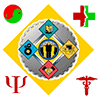
Frequently Asked Questions (FAQ)
FAQ
1. What is Transformational Safety?
Transformational Safety is a phrase created by David G Broadbent of Strategic Management Systems Pty Ltd, to describe the application and impacts of transformational leadership on the safety behaviors within workplaces.
When David first came up with this “name” for describing this powerful and unique way of understanding safety he did what all good professionals do. He resorted to Google. When he conducted a phrase search of “Transformational Safety” guess what happened. Zero page hits. Unprecedented in the world of Google. So what was evident is that David was likely the first in the world to come up with the phrase Transformational Safety. When it came time to register the Transformational Safety trademark, the same result. Don’t be fooled or seduced by anyone suggesting that Transformational Safety is something they came up with – they did not.
Why are we telling you this?
It just so happens that there are a couple of global safety consultancies who were introduced to the concepts of Transformational Safety by David and they have then gone off and tried to market this “thinking” as their own – this is despite these same businesses having endorsed Intellectual Property Agreements, just goes to show dishonesty and corrupt behavior can exist where we least expect it?
Having said all that, for generations now safety psychologists have been trying to determine how to maximize safe workplace behaviors and minimize injuries which occur within workplace environments. One of the frequent observations is that despite the genuine efforts, and buckets of money, expended upon numerous safety programs, safety improvements are often not of a long term nature. Contemporary research evidence has shown that the constructs of transformational leadership, with particular emphasis upon the Full Range Leadership Model, have been significant predictors of sustained safety performance. The development of the Transformational Safety Improvement System is grounded upon these principles.
2. What is the Transformational Safety® Survey?
The Transformational Safety® Survey is the World’s only safety culture interrogation system that integrates a traditional safety culture model with a state-of-the-art safety leadership tool; synergistically related to transformational leadership theory and the constructs created by Professors Bernie Bass and Bruce Avolio within their Full Range Leadership® Model. To review the history of the Transformational Safety Survey Click Here.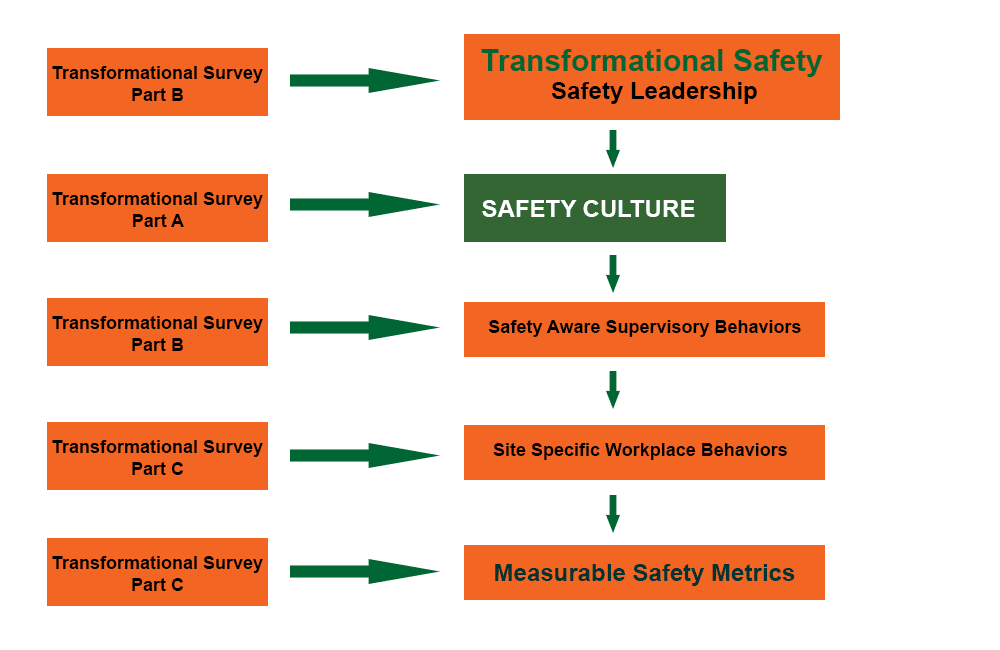
3. What does the Transformational Safety Survey measure?
 The Transformational Safety® Survey is an important component of an integrated safety improvement system. It therefore has the potential to measure a lot of safety related concepts and is therefore a lot more than just a survey. The data is broken down into a number of categories. The DEMOGRAPHICS section is designed by the TransformationalSafety®.Com Facilitator in partnership with the Customer. By designing the right demographic questions at the front end it allows for a number of insightful data slices to be determined later.
The Transformational Safety® Survey is an important component of an integrated safety improvement system. It therefore has the potential to measure a lot of safety related concepts and is therefore a lot more than just a survey. The data is broken down into a number of categories. The DEMOGRAPHICS section is designed by the TransformationalSafety®.Com Facilitator in partnership with the Customer. By designing the right demographic questions at the front end it allows for a number of insightful data slices to be determined later.
PART A is based upon traditional safety culture constructs. Part A quantifies many research validated safety culture constructs and one of the many things which makes The Transformational Safety® System unique is the manner in which the data is managed. A customised radar plot (Safety-Plex) is generated which identifies the position of the client against identified best practice targets. Item by Item responses are also provided for all the Part A items along with a Standard Deviation (SD). The SD you can think of as a certainly score. The smaller the number the more focused were the responses within the Survey itself. In other words a large SD and this says that the 200 respondents were all over the place in their response patterns.
PART B is the World’s only safety leadership tool built specifically around transformational leadership constructs. The leadership behaviours explored within the instrument are synergistically related with the worlds best practice safety leadership research. Some of the leading safety researchers in the World are supporting the theoretical direction of Part B; by way of their own publishing. Professor Rhona Flynn (University of Aberdeen – Scotland), Professor Julian Barling (Queens University – Canada), and Professor Dov Zohar (Visiting Professor – University of Lincoln/Nebraska) are just a few.
PART C of the Transformational Safety® Survey is concerned with Site Specific safety metrics that may be of interest. The type of item here is determined in conjunction with the TransformationalSafety®.Com Facilitator. This section of Transformational Safety® Survey allows each organisation to take advantage of the unique survey delivery system to gain valuable site specific safety data, whilst maintaining the statistical integrity of the Tool as a whole.
4. How does it capture the architecture of Safety Culture?
In May 2000 Larry L. Hansen suggested within the publication Professional Safety (American Society of Safety Engineers):-
“……….business has focused almost exclusively on the “E’s” in the safety equation—engineering, education and enforcement. In large part, safety professionals have mastered these areas. Now it is time to work on the building blocks of culture, organizational strategy, performance leadership and organizational behaviour—the true accident sources.”
The Transformational Safety® Survey is specifically targeted at the building blocks of “Culture”. Particularly “safety leadership” and “cultural constructs”. The Transformational Safety® Leadership Constructs are:-
By utulising the “Hudson Rule” within an empirical framework we are able to not only show the The Transformational Safety® Leadership Constructs, we are also able to demonstrate where an organisation sits with reference to the Best Practice zones.
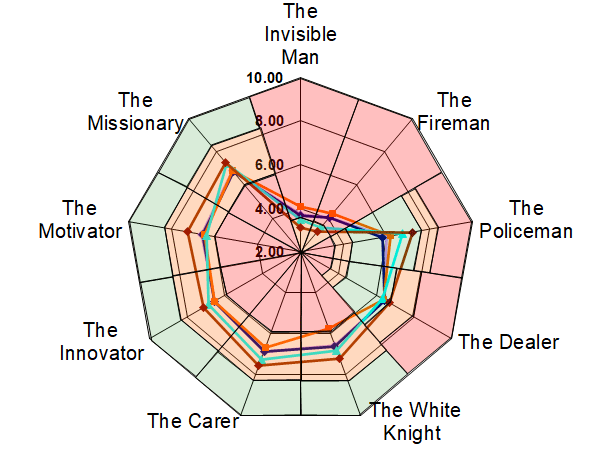
The above Transformational Safety Leader-Plex shows a very traditional leadership culture heavily grounded in transactional behaviours. Note the very high observation of “invisibility” within the Labourers/Plant Operators; arguably an area of greater underlying risk.
The “cultural constructs” explored within The Transformational Safety® Survey are indicated below:-
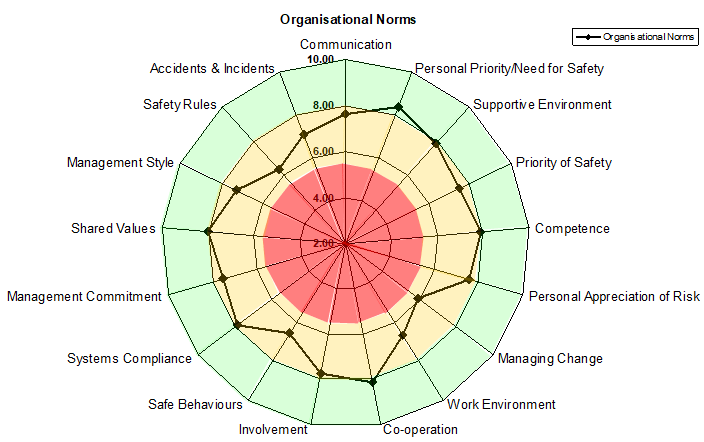
If you are interested in further understanding the concepts behind the development of The Transformational Safety® Survey refer to the associated Bibliography.
5. Is the Transformational Safety Survey reliable and valid?
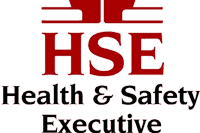 Part A has been endorsed by the British Health and Safety Executive and principal components factor analysis has found it to measure what it says it measures. Statistical reliability of the Items contained within Part A has been demonstrated using industry standard tests of significance. Internal-scale reliability (or consistency) is applied to groups of items that are thought to measure different aspects of the same concept. This is important because a group of items that purports to measure one variable should be clearly focused on that variable and the accepted level for this statistic (Cronbach’s alpha) is around 0.6. Cronbach’s alpha results are shown below.
Part A has been endorsed by the British Health and Safety Executive and principal components factor analysis has found it to measure what it says it measures. Statistical reliability of the Items contained within Part A has been demonstrated using industry standard tests of significance. Internal-scale reliability (or consistency) is applied to groups of items that are thought to measure different aspects of the same concept. This is important because a group of items that purports to measure one variable should be clearly focused on that variable and the accepted level for this statistic (Cronbach’s alpha) is around 0.6. Cronbach’s alpha results are shown below.
| Factor | Chronbach’s Alpha |
| Management commitment | 0.845 |
| Priority of safety | 0.722 |
| Communication | 0.724 |
| Safety rules | 0.715 |
| Supportive environment | 0.616 |
| Involvement | 0.705 |
| Personal priorities and need for safety | 0.607 |
| Personal appreciation of risk | 0.631 |
| Work environment | 0.779 |
Part B of The Transformational Safety Survey has used a different approach to reliability knows as Alternate-Forms reliability. Alternate-form reliability involves comparing two different versions of the same measure in different ways. The items within Part B of the Transformational Safety Survey were developed post hoc to match the Transformational Safety leadership constructs. Face validity determination exceeded 0.85. Inter-rater reliability co-efficient exceeded 0.9.
The internal validity of the Transformational Safety Survey is arguably the most robust safety culture interrogation tool available anywhere in the world. This is a “big call” so how do we achieve this? Every administration of The Transformational Safety Culture Survey has built in to its structure an internal validity scale. What that means is that we are able to determine how well participants responded to the questions that they have been asked. We are able to use robust statistical techniques to ensure that respondents are “attending” to the Survey. Those who are clearly responding in a random or haphazard manner actually add no value to a clients safety journey. What we do then is firstly assess the validity of the overall response patterns of all respondents. Secondly, TransformationalSafety.Com is able to identify individual respondents who have been randomly responding. These particular respondents are then removed from the data set. By taking this assertive approach to statistical validity we ensure that the Transformational Safety Survey gives our clients the absolute maximum ability to adjudge the safety culture of their workforce. We need to be clear at this point. Removal of invalid response sets follows worlds best practice. In no way does this approach remove people who may have negative opinions about safety within their work environment. Indeed the opposite is true! By removing random responders the opinions of genuinely interested respondents is given the level of statistical importance that such deserves. For further information on this subject refer to the October 2006 Edition of Transforming Safety.
Part C of The Transformational Safety Survey is created by TransformationalSafety.Com based upon the recommendations of the TransformationalSafety.Com accredited facilitator. There is no statistical validity associated with Part C, although the integration of a customised component allows the Transformational Safety Survey to go further than any other safety culture system available within the market today. It allows organisations to analyse specific reference data in regard to the particular needs of their business, without sacrificing, in any way, the integrity of the Transformational Safety Improvement System.
6. How is the Transformational Safety Survey delivered?
The Transformational Safety® Survey is able to be provided using a range of delivery systems. By far the most powerful and valid administration of The Transformational Safety® Survey is using our patented wireless delivery system. Due to the added validity that this delivery system gives to the data this mechanism shall always be explored by an accredited Transformationa Safety® facilitator prior to exploring our alternate methods of data collection.
Should it be determined that the On-Site Wireless Delivery System is untenable then Transformational Safety is able to offer a number of alternate delivery systems to enable data collection. These are:-
| Customised Web Administration | |
| Email Administration | |
| Fillable Form Administration | |
| Paper/Pencil Administration |
Customers should be aware that the off-site administrations provide an abridged Part A. The power and flavour of a number of cultural constructs are unable to be quantified without using the additional value of the strategic Transformational Safety Focus Group methodologies.
7. How long does it take to complete?
The Transformational Safety® Survey is able to be completed in approximately 30 minutes. This is the targeted range for completion of Parts A and B. As Part C is a variable component the time to complete items from Part C would need to be appended. The TransformationalSafety®.Com Facilitator is able to partner with Customers to assist identify the most useful Items to add within Part C to gain the maximum trade-off between data integrity and time expended.

8. Can we benchmark within and between organisations?
The databases that shall be maintained by Transformational Safety®.Com shall enable comparisons (benchmarking) across sites/industries etc.
 We make the point though that the traditional use of the “benchmark” is of limited value unless the comparison data has been identified as “best practice” via other convergent methods. The value, or lack of value of the “benchmark” shall be explored during the TransformationalSafety®.Com accreditation process in order that TransformationalSafety®.Com facilitators are well able to support customers explore the question of benchmarking.. There is little value to be gained for Org A to compare itself to Org B unless it has been independently determined that Org B is the “best of the best”; otherwise you may literally be comparing an apple with an orange. Yes, they are both pieces of fruit, and that is about the extent of the comparison.
We make the point though that the traditional use of the “benchmark” is of limited value unless the comparison data has been identified as “best practice” via other convergent methods. The value, or lack of value of the “benchmark” shall be explored during the TransformationalSafety®.Com accreditation process in order that TransformationalSafety®.Com facilitators are well able to support customers explore the question of benchmarking.. There is little value to be gained for Org A to compare itself to Org B unless it has been independently determined that Org B is the “best of the best”; otherwise you may literally be comparing an apple with an orange. Yes, they are both pieces of fruit, and that is about the extent of the comparison.
The TransformationalSafety®.Com facilitator has received special training on when and how to best utilise comparative data within and between organisations.
9. Where else has it been used?
The Transformational Safety® System is the only safety culture improvement system that incorporates transformational theory. Transformational Theory is the most empirically researched model in the world. The two foremost commentators on leadership Avolio and Posner both espouse transformational principles. More recently some of the leading safety culture researchers in the world, Zohar, Flynn, and Barling are all strongly showing powerful relationships between what we are “measuring” and safety outcomes (right down to metrics like site injury rates). The transformational models have been shown to be culture independent and applicable across all occupational groupings.
Part A of the System has been used throughout manufacturing, mining, and engineering industries, just to name a few. There is also a powerful developmental history within the offshore industries. The two recognised danger industries are generally accepted to be “nuclear” and “offshore”. We have incorporated constructs from both of these within the Transformational Safety® System.
Transformational leadership theory is arguably the most heavily researched leadership construct for generations. It has been used throughout all industry groupings imaginable and has an enviable international reputation. Research has shown it to be equally powerful across different cultures making it an ideal framework upon which to develop Part B of The Transformational Safety®System.
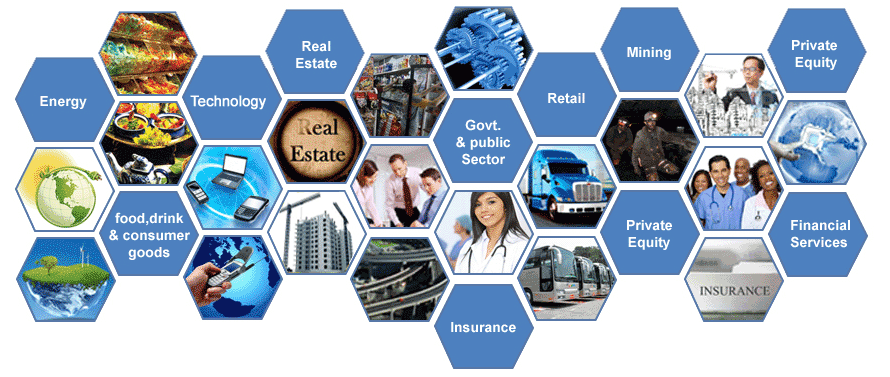
10. Can the Transformational Safety Survey be customised?
Part A and Part B CANNOT be customised. Once you start trying to do things like that with any instrument you impact the power of the science behind its creation. Factor Analysis etc is a sensitive process and any change within an item shall impact this critical internal validity. We are then in a position of not being able to state, with the same level of certainty, that the factors identified through the empirical program remain valid (any company that suggests otherwise has not passed Statistics 101).
TransformationalSafety®.Com though recognises that the market in which we operate would probably wish for some level of customisation. This is the purpose of Part C.
Part C is completely developed with the Customer and TransformationalSafety®.Com. So Part C is 100% customised. Should the Customer not require additional items then Part C does not exist within the Survey program.


